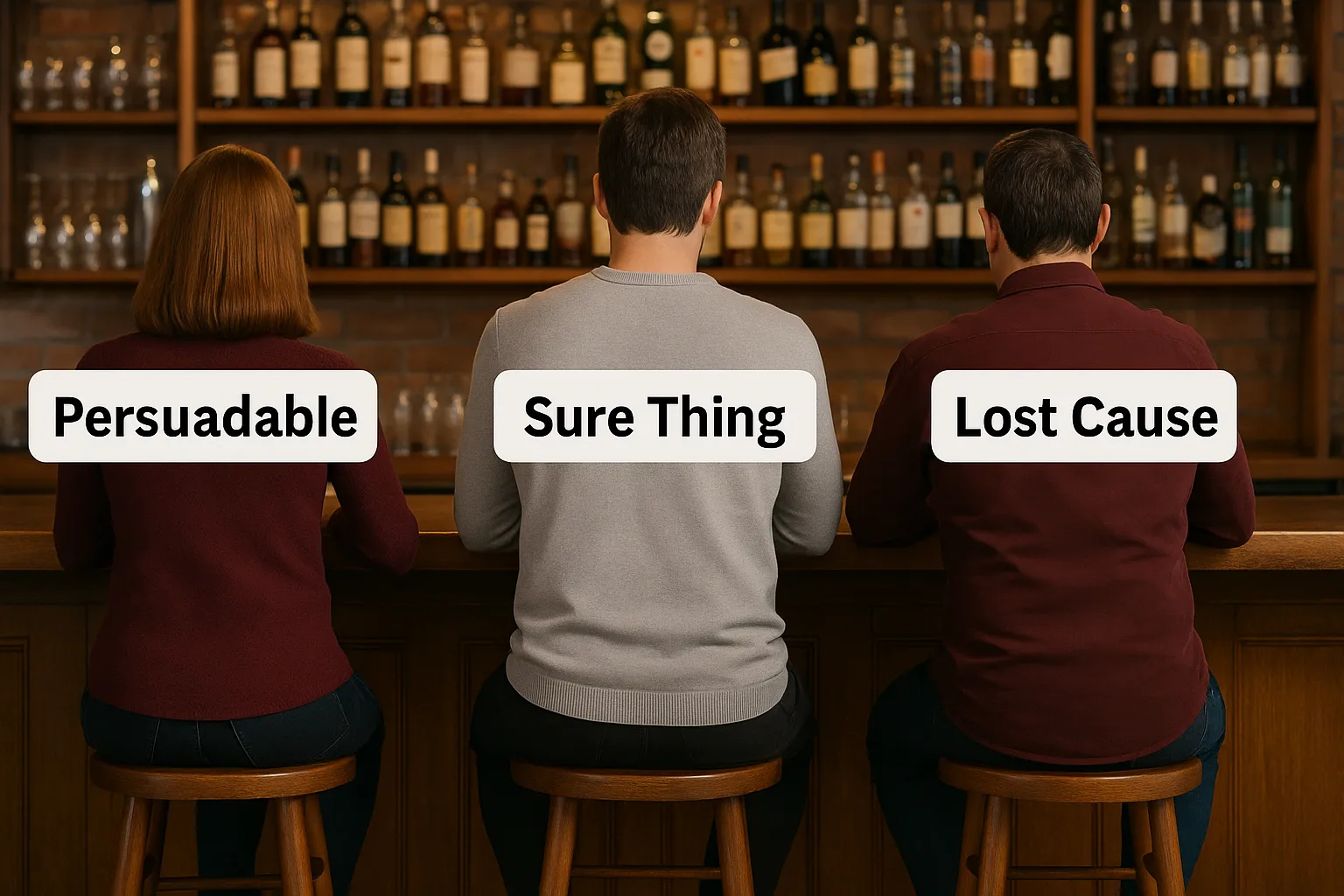Solutions
Teams
Built for your whole team.
Industries
Trusted by all verticals.
Mediums
Measure any type of ad spend
Platform
Use Cases
Many Possibilities. One Platform.
AI and Automation
The Always-on Incrementality Platform
Teams
Built for your whole team.
Industries
Trusted by all verticals.
Mediums
Measure any type of ad spend
Use Cases
Many Possibilities. One Platform.
AI and Automation
The Always-on Incrementality Platform

User acquisition teams, growth marketers, and brand marketers always wanted to know one thing - did our campaign actually cause customers to convert, or would they have done it anyway? That’s where uplift modeling comes in.
So, what is uplift modeling? It’s a statistical technique that isolates the incremental impact of a marketing action. Instead of simply counting impressions, clicks, conversions – uplift modeling helps you identify the causal influence between who converted because of your marketing vs. who would have converted regardless.
Simply put - uplift modeling doesn’t care about who saw an ad – it cares about who was convinced to act by it. And that’s a massive shift in how marketing effectiveness gets measured.
All marketing attribution models - last touch, first touch, multi-touch, data-driven - are obsessed with dividing credit among touchpoints. But none of them answer the most critical question: Did the campaign make a difference?
Pause and think for a few seconds. Even if you knew all the ads a user saw, the places they visited. Would this data actually tell you factually “why did this user purchase an item?” or even “why did this user download an app?”. It wouldn’t. as users – we are a lot more complex than what attribution models would let us believe.
That’s where uplift modeling wins. Rather than relying on exposure ids or cookie trails, it estimates the incremental lift caused by your actions. Traditional attribution might tell you that your social campaign “drove” 1,000 conversions. Uplift modeling reveals that maybe only 400 of those were actually incremental - the rest would have happened anyway.
For teams focused on incrementality measurement, this distinction isn’t just academic. It’s the difference between spending efficiently and burning through your budget.

From a data science perspective, uplift modeling in data analytics belongs to the field of causal inference. It’s a method that compares two groups:
• Treatment group - users exposed to your marketing campaign.
• Control group - users who were not exposed.
By analyzing how conversion rates differ between the two, you can estimate the uplift - the incremental effect your campaign had.
Data analysts often use techniques such as:
• Two-model approaches
• Uplift random forests
• Causal forests and meta-learners
For implementation, popular Python libraries like CausalML, EconML, and scikit-uplift make it possible to build sophisticated uplift models without reinventing the wheel.
If you’re a marketing data analyst, these tools are your secret weapon for moving beyond correlation and proving causation. Learn more here.
Now that we’ve covered the theory, let’s talk about uplift modeling in marketing and how it drives better business outcomes.
Marketers can use uplift modeling to:
1. Identify high potential audiences - those who are likely to convert only after exposure to marketing.
2. Avoid wasted spend - by excluding “sure things” (who will convert anyway) and “lost causes” (who won’t convert regardless).
3. Improve ROI forecasting - by understanding how incremental lift translates to actual business growth.
The beauty of uplift modeling is that it turns massive, messy data into actionable insights. You’re no longer guessing who to target - you know who’s worth targeting.

Incrementality is the North Star for marketers tired of vanity metrics. While most analytics tools count impressions, clicks, and attributed conversions, uplift modeling focuses on the true impact.
In essence, uplift modeling is the statistical backbone of incrementality measurement. By isolating the incremental effect, it answers questions like:
• How many conversions were actually caused by our campaign?
• Which audience segments are most responsive?
• What would happen if we paused this campaign tomorrow?
How to Apply Uplift Modeling Step-by-Step
• Step 1: Define your objective. Choose your KPIs carefully.
• Step 2: Split your audience. Randomly divide your audience into treatment and control groups to ensure unbiased comparison.
• Step 3: Collect and clean data. Ensure your datasets include behavioral and demographic features with standardized formats.
• Step 4: Build the model. Use methods like uplift trees or causal forests to estimate treatment effects for each user.
• Step 5: Optimize and act. Focus on the persuadable audience and scale campaigns that generate true incremental impact.
As privacy regulations tighten and third-party cookies disappear, marketers need privacy-safe, data-driven methods that still deliver measurable impact.
Uplift modeling fits perfectly. It doesn’t rely on user level data; it relies on experimental design and aggregated behavioral data.
Forward-thinking companies like INCRMNTAL already use uplift modeling to power causal, privacy-safe measurement.
Marketing is finally moving beyond correlation. With uplift modeling, you can measure true impact, not just activity. It’s how modern marketers prove the value of every dollar spent, focusing budgets where they truly drive growth.
In short, uplift modeling is more than a data technique - it’s how you prove incrementality in a world that demands proof.
Let’s make this real. Freenow by Lyft – the mobility giant – wanted to grow new active users. They had sophisticated analytics and internal models, but they struggled to detect waste.
They were optimizing attribution, not impact. Using INCRMNTAL’s platform, Lyft applied continuous incrementality analysis across campaigns, week by week.
What they found:
They didn’t need more ads. They needed better understanding. They stopped chasing ghosts in attribution reports and started investing in actual growth drivers.